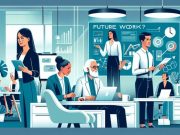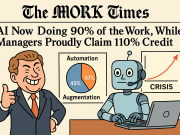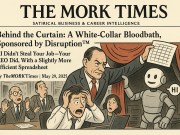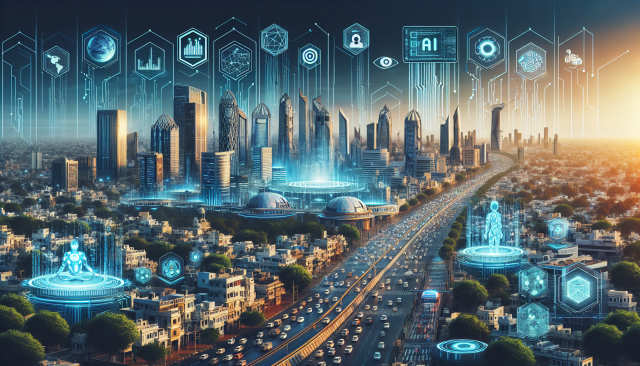Onsite Fixes: The 180‑Piece Toolkit Rewiring Workplace Resilience
Onsite Fixes: The 180‑Piece Toolkit Rewiring Workplace Resilience
In modern work life, a cracked phone screen, a faltering laptop hinge, a slow tablet battery or a loose pair of eyeglasses can interrupt a day as surely as a power outage. Those interruptions ripple through schedules, meetings and output. They also expose an opportunity: what if more fixes happened where work happens, at the speed of need, without waiting for days of vendor shipping or the friction of warranty queues?
Repair as a competitive capability
Repair used to be invisible in office budgets. It was relegated to third‑party service calls and staged like an occasional expense. Today, as hybrid schedules, distributed teams and lean IT budgets become the norm, repair capability has become strategically important. A compact, affordable toolkit that addresses the everyday failures of devices and personal optics is not a nicety — it is a utility. It reduces downtime, keeps people productive, and turns small problems into quick wins instead of protracted operational headaches.
What a 180‑piece repair kit actually brings to the workplace
A comprehensive repair kit with roughly 180 modules and accessories is designed to be a Swiss army knife for modern technic needs. Those modules commonly include precision screwdrivers, anti‑static tools, pry bars and picks, tweezers, suction handles, spudgers, replacement screws and tiny clamps — and often a range of interchangeable bits to match fasteners used in laptops, phones, tablets and eyewear.
- Versatility: One kit can service a phone, a tablet and a laptop port in the same session, then switch to eyeglass nosepad or hinge repair without heading to a parts drawer.
- Portability: Compact kits fit in a desk drawer, a communal repair bench or a facilities van, enabling fast on‑site fixes.
- Cost efficiency: Basic repairs done internally can save on service call fees and reduce replacement purchases.
- Repeatability: Standardized tools and bits create predictable repair workflows, reducing trial and error.
Practical scenarios that change the workday
Imagine a few common scenes:
- A product manager arrives for a video review only to find a camera bezel loose. A 10‑minute bench repair and the meeting proceeds on schedule.
- A field technician’s tablet loses a charging port. A replacement screw and a spudger let them limp through the day without returning to base.
- An employee’s favorite reading glasses have a stripped hinge screw. With small drivers and a screw pack, optical downtime is resolved in minutes.
Each vignette shows how the right tools reframe time: minutes are saved, productivity is restored and team coordination costs are avoided.
Economics and sustainability in one package
Repair capability impacts more than immediate convenience. From a ledger perspective, allowing devices to be fixed rather than replaced conserves capital expenditures. From a sustainability perspective, small repairs compound: fewer replacements means fewer manufactured devices, less shipping, and a smaller electronics waste stream. For organizations with procurement and sustainability goals, equipping teams with a repair kit aligns operational efficiency with environmental stewardship.
Designing a culture that embraces small repairs
Tools alone do not change outcomes; adoption does. When organizations make repair tools visible and accessible — on a communal bench, in a shared toolbox app or as part of onboarding — the psychology shifts. Repair becomes routine rather than exceptional. People experiment with confidence when they can borrow a kit and follow a simple, documented workflow. That small cultural change encourages resourcefulness and reduces the inertia that turns trivial failures into major disruptions.
How this matters for managers, IT and small businesses
- Managers: Fewer lost hours and faster recovery from device failures means teams meet deadlines more reliably.
- IT teams: Standardized kits reduce ticket complexity and free technical staff to address deeper systemic issues rather than trivial hardware fixes.
- Small businesses: For shops with limited budgets, a single multipurpose kit covers a wide range of likely problems, preserving cash flow and avoiding expensive downtime.
Beyond the screwdriver: thinking systemically
Repair capability should be integrated into broader workplace systems. That means:
- Inventorying common spare parts so a missing screw or pad does not block a repair.
- Pairing toolkits with short repair guides or videos to reduce hesitation and accelerate learning.
- Tracking repairs to spot recurring hardware reliability issues that might indicate a procurement problem.
When repair becomes data, patterns emerge. Companies can then choose whether to change vendors, renegotiate warranties or alter purchasing specifications to get inherently more repairable devices.
An invitation to practical resilience
A 180‑piece repair kit is modest in price and transformative in effect. It is a pragmatic investment in organizational resilience: inexpensive to buy, easy to store and rich in day‑to‑day value. It supports a working world that prizes speed, frugality and sustainability. It also champions a mindset where people solve small problems themselves, restoring flow and autonomy across offices and distributed teams.
In the end, workplaces that can fix more of what breaks keep their momentum. They reduce waste, save money and preserve the small but vital human moments that add up to productivity. A compact, thoughtfully composed kit turns a pile of potential delays into a well‑managed day. The work of repair is, in itself, work worth doing — and worth equipping people to do well.
Practical repair is not merely about tools. It is about reimagining the workplace as a place where small interruptions are quickly and sustainably resolved, where autonomy and preparedness meet to keep people working.































